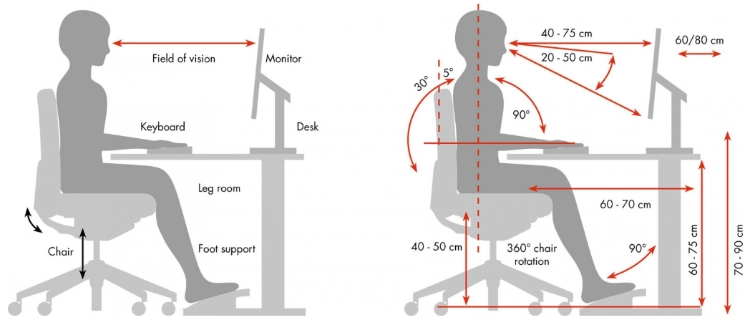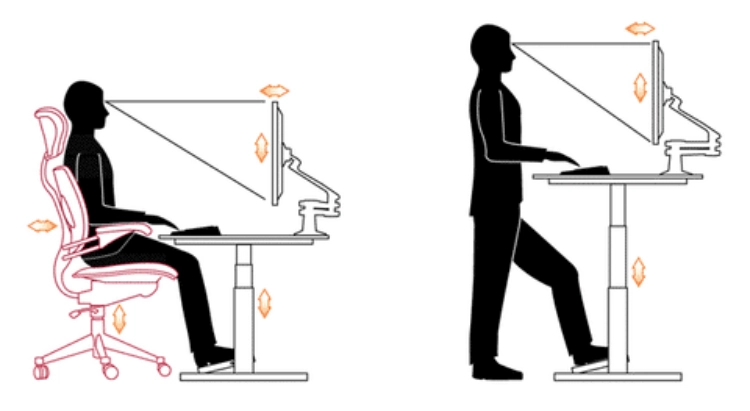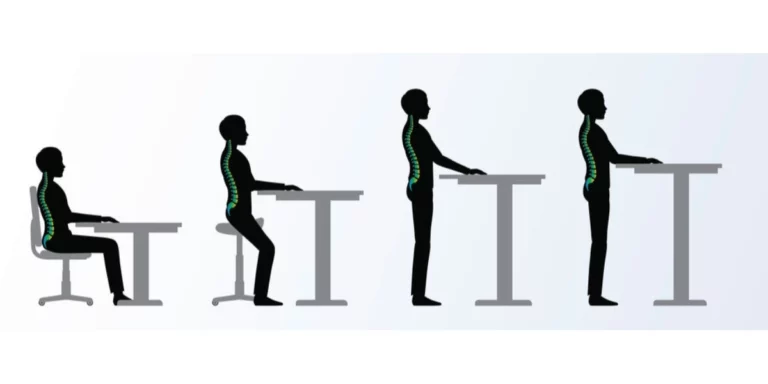How Ergonomics in the Workplace is Important?
Ergonomics, also known as human factors engineering, is the study of how humans interact with their environment, is the science of designing the workplace to fit the capabilities and limitations of the human body, and is a crucial aspect of creating a safe and comfortable work environment[1].
In today’s modern society, many individuals spend a significant amount of time working in an office setting. However, prolonged periods of sitting and engaging in repetitive tasks can lead to various musculoskeletal issues. This is where the principles of ergonomics come into play. This article will explore its significance in the office, its benefits, and practical tips for improving ergonomics in the office.
The Significance of Ergonomics in the Workplace:
Ergonomics plays a vital role in promoting the health and well-being of employees in an office setting. Poor ergonomic design can lead to a variety of physical ailments, including musculoskeletal disorders, eyestrain, and repetitive strain injuries. By implementing ergonomic principles, employers can create a workspace that is not only more comfortable for employees but also reduces the risk of workplace injuries and absenteeism.
Benefits of Ergonomics in the Workplace:
- Improved Health and Well-being:
Proper ergonomics can help reduce the risk of injuries such as carpal tunnel syndrome, back pain, and neck strain. - Increased Productivity:
When employees are comfortable and supported in their work environment, they are able to focus better and stay more productive throughout the day. - Enhanced Employee Engagement:
A workplace that prioritizes ergonomics shows employees that their well-being is valued, leading to higher job satisfaction and engagement. - Cost Savings:
By investing in ergonomic furniture and equipment, employers can reduce the likelihood of workplace injuries and related healthcare costs.
Practical Tips for Improving Ergonomics in the Workplace:
- Desk Setup:
One of the key elements of ergonomics in the office is the setup of the desk and workstation. It is important to ensure that the desk height, chair height, and monitor placement are all adjusted to promote good posture and reduce strain on the body. A properly set up workstation can help prevent issues such as neck pain, back pain, and eye strain. - Chair Selection:
Choosing the right office chair is essential for promoting good ergonomics. An ergonomic office chair should provide proper lumbar support, adjustable armrests, and a comfortable seat cushion. Employees who sit for extended periods should also have the option to adjust the height and tilt of their chairs to maintain good posture and reduce the risk of developing musculoskeletal disorders. - Keyboard and Mouse Placement:
The placement of the keyboard and mouse on the desk can also impact ergonomics. The keyboard and mouse should be positioned at a height that allows the employee’s arms to rest comfortably at their sides with their elbows at a 90-degree angle. This can help prevent issues such as carpal tunnel syndrome and wrist pain. - Lighting and Glare:
Proper lighting is another important aspect of ergonomics in the office. Employees should have access to natural light when possible, and overhead lighting should be adjusted to reduce glare on computer screens. Glare can cause eye strain and headaches, so it is important to minimize its impact on employees. - Breaks and Movement:
Encouraging regular breaks and movement throughout the workday is crucial for promoting good ergonomics. Sitting for long periods without movement can lead to stiffness and discomfort. Employers should encourage employees to take short breaks to stretch, walk around, and rest their eyes. Additionally, incorporating standing desks or ergonomics accessories like footrests can help employees vary their posture throughout the day.

Overall, incorporating ergonomics into the office environment is essential for supporting employee health and well-being. By paying attention to ergonomic design principles and providing employees with the tools and resources they need to work comfortably, such as proper desk setup, chair selection, keyboard and mouse placement, lighting adjustments, and encouraging movement, organizations can create a workspace that promotes productivity and reduces the risk of musculoskeletal disorders. Investing in ergonomics not only benefits employees’ physical health but also leads to higher job satisfaction and overall performance in the workplace.
- Vaka is proud to be in the line of height adjustable standing desk manufacturers in China.








